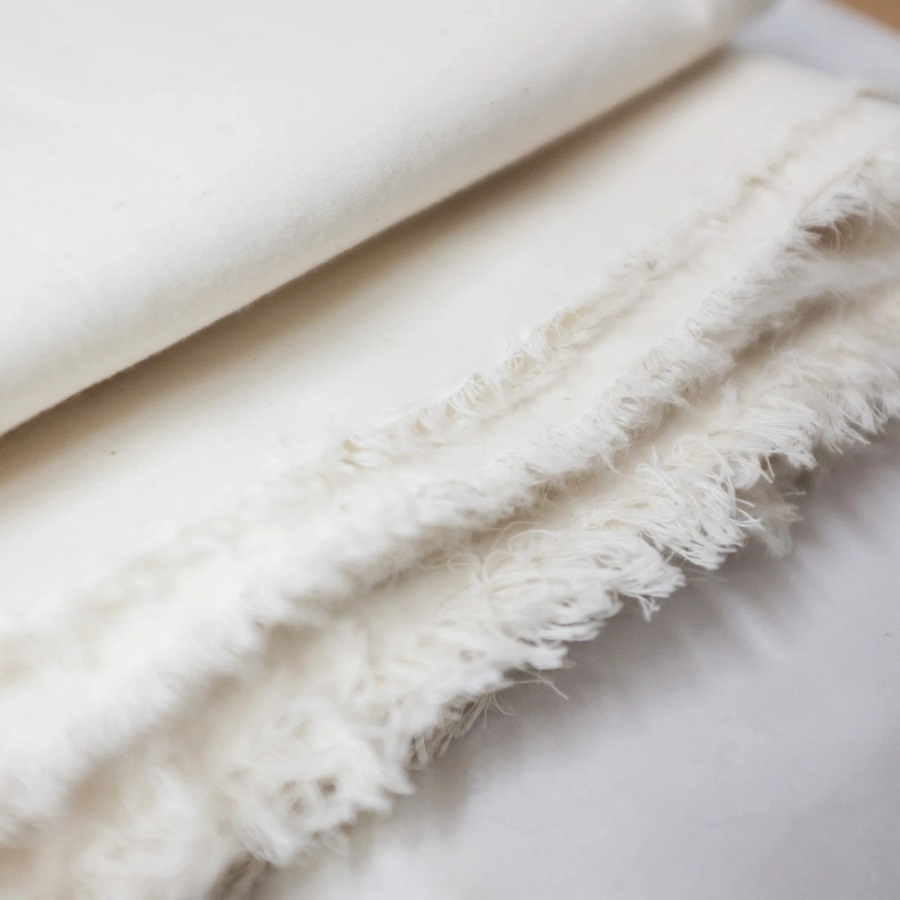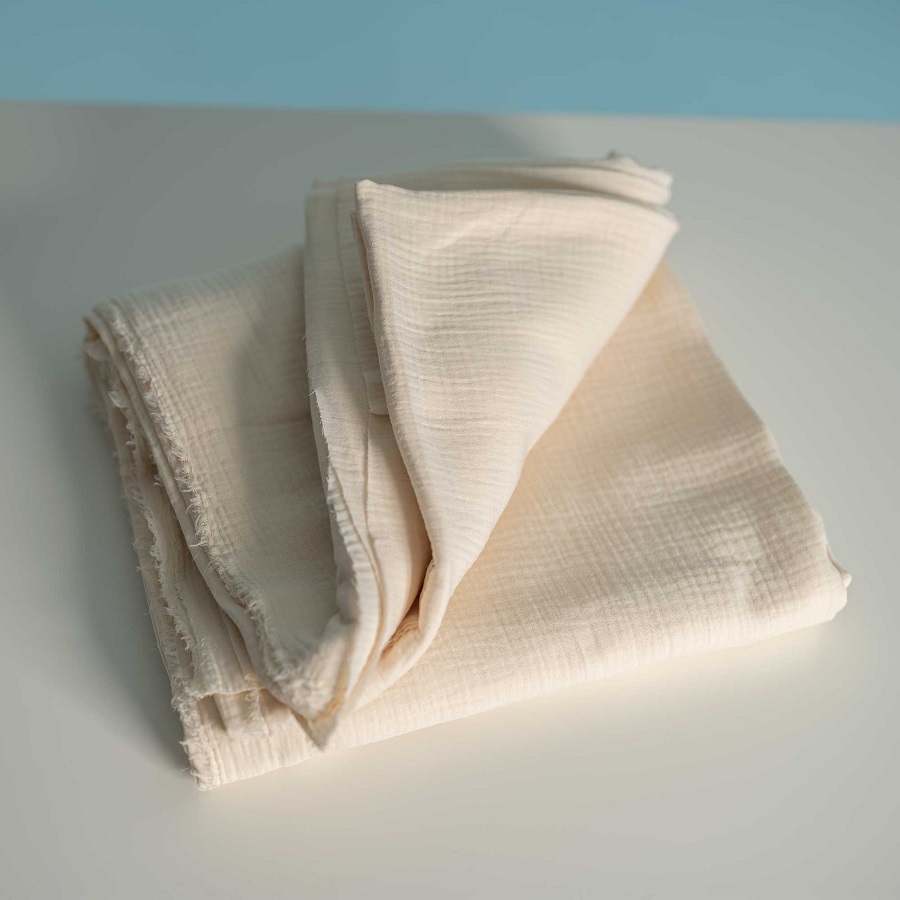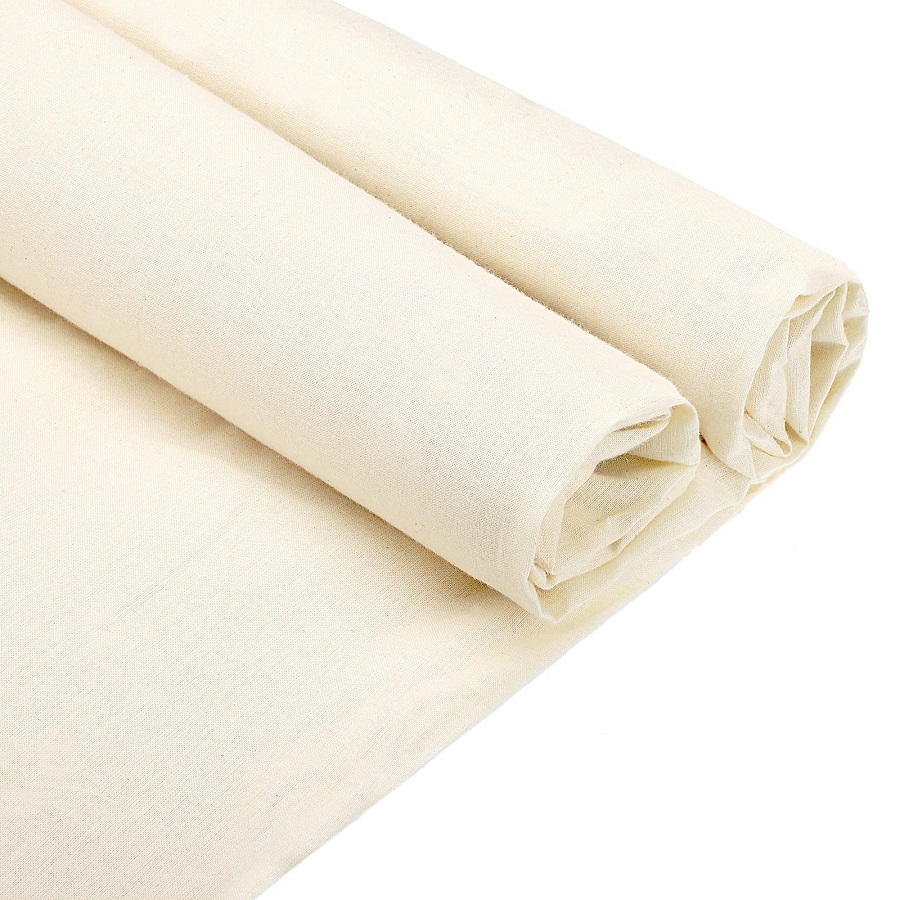What is Muslin Cotton?
Muslin cotton fabric is a versatile material known for its lightweight, breathable qualities. Often it’s used as a prototype for fashion design before cutting into more expensive fabric. The weave of muslin cotton is plain and typically loosely constructed, which contributes to its softness and drape. It comes from the cotton plant, making it a natural fiber that is absorbent and gentle on the skin. The history of muslin cotton dates back to the ancient world, where it was prized for its softness and export quality. Today, it remains a popular choice for a wide range of sewing projects, from clothing to home decor. Muslin is also preferred in settings where high temperatures are used, like quilting, because it is heat resistant. Designers and hobbyists alike choose muslin cotton for mock-ups and pattern testing due to its cost-effectiveness and easy-to-alter nature.
Benefits of Sewing with Muslin Cotton
Sewing with muslin cotton fabric offers a host of benefits that make it a preferred choice for designers and sewing enthusiasts. Firstly, muslin is cost-effective. The material is affordable, which makes it ideal for trial runs or drafts before using more expensive fabrics. This allows for adjustments and revisions without significant financial loss.
The breathable nature of muslin cotton is another advantage, especially in making garments. Clothes crafted from muslin are comfortable to wear in warm climates due to its airy quality. Plus, its absorbency adds to the comfort, as it helps keep the skin dry by wicking away moisture.
Ease of handling stands out when working with muslin cotton. Its simplicity to cut, pin, and sew makes it optimal for beginners learning sewing techniques. The fabric doesn’t slip much, which gives more control during the sewing process. This quality also helps in creating detailed pieces, as it stays in place while stitching intricate patterns and designs.
For those into quilting, muslin cotton’s heat-resistant properties come in handy. Muslin can withstand high temperatures, which is beneficial while pressing and ironing during the quilting process.
Finally, muslin cotton fabric’s softness and drape make it popular in both fashion design and home decor. It gives a gentle, elegant fall to curtains and is also an excellent choice for breathable summer clothing.
These benefits highlight why muslin cotton is not just a practical choice but also a versatile and reliable material for a variety of sewing projects.

Selecting the Right Muslin Cotton for Your Project
When choosing muslin cotton fabric for your project, several factors come into play. The weight, color, and thread count of the muslin are crucial to consider. Lightweight muslin works well for delicate projects like summer dresses or blouses. Whereas, heavier muslin is better for quilting or sturdy totes. Muslin cotton comes in bleached and unbleached varieties. Bleached muslin has a whiter appearance and is suitable for projects that will showcase its color. Unbleached muslin has a more natural look and may vary in shade.
Thread count is also an important factor to consider when selecting muslin. A higher thread count means a finer weave, which can give a smoother finish to your project. However, a lower thread count is not necessarily a disadvantage. It can provide more texture and grip, which could be beneficial for certain pieces. Balance your project’s needs with these considerations to ensure you choose the best muslin cotton fabric. Always keep the end-use of your project in mind as it guides your selection process. For example, if you plan to dye the fabric, ensure the muslin adjusts well to color treatments. Remember, not all muslin is the same and picking the right one can make all the difference in your sewing project.
Pre-Washing and Preparing Muslin Cotton
Before cutting into your muslin cotton fabric, pre-washing is a key step. This process helps to remove any chemicals or starches that may be present from production. It also shrinks the fabric before sewing, which can prevent future misshaping after your project is complete.
Begin by using warm water for the wash to facilitate shrinking. Avoid harsh detergents, as muslin cotton is a natural fiber and can get damaged easily. If you anticipate heavy use, such as in quilting or wearable items, consider a second rinse to ensure thorough cleaning.
After washing, gently untangle any knots and lay the fabric flat or hang it to dry. Avoid high heat when drying, as it can cause unwanted crinkling or even more shrinkage. If you must use a dryer, opt for a low heat setting.
Once dry, ironing your muslin cotton fabric is crucial. Use a medium-hot iron and press the fabric until it’s smooth and wrinkle-free. This creates an even surface, making it easier to lay out patterns or cut fabric accurately.
Finally, folding the fabric along its natural width-wise grain can maintain its integrity for storage. This is especially important if your project is delayed after pre-washing. Preparing muslin cotton correctly will lead to better results in your sewing endeavors and ensure your projects look professional and polished.
Cutting Techniques for Muslin Fabric
Cutting muslin cotton fabric demands precision to ensure the final project’s success. Let’s discuss some techniques that cater to this need.
First, use sharp scissors or a rotary cutter. Dull blades can tug at the fabric, leading to inaccuracies. Always keep your cutting tools in prime condition.
Next, flat lay the fabric on a cutting surface. Smoothing out wrinkles or folds is essential before cutting. This guarantees a level cut.
Then, secure the fabric using weights or pins. This avoids shifting, which can distort the cut. Choose flat-headed pins to prevent fabric puckering.
Always follow the grainline when laying out patterns. Cutting along the grain keeps the fabric’s natural flow, critical for a project’s drape.
Measure twice, cut once is an old adage for a reason. Take your time with measurements to avoid mistakes and waste.
Finally, when cutting curves or corners, go slow. Smaller snips make for more precise curves and sharp, clean corners.
Adhere to these cutting techniques to create professional-looking pieces with muslin cotton fabric.
Sewing Tips for Muslin Cotton
When sewing with muslin cotton fabric, following certain tips can help achieve cleaner, more professional results. Here are some techniques to help you work with muslin more effectively:
- Stitch with a fresh needle. A new, sharp needle prevents snags and skips.
- Test the stitch on a scrap of muslin first. Ensure tension and stitch length are ideal.
- Use the right thread. Cotton thread works well with muslin cotton fabric.
- Be generous with seam allowances. Muslin frays easily, so wider seams prevent unraveling.
- Iron seams as you go. This step keeps the fabric flat and makes seams crisp.
- Stay-stitch curves. This reinforces edges and prevents stretching out of shape.
- Sew with correct tension. Adjust your machine to avoid puckering in the lightweight muslin.
- Use basting stitches for fitting. Baste before final stitching to make adjustments simple.
- Finish edges properly. Options like serging or French seams can secure the raw edges.
By incorporating these tips into your sewing process, working with muslin cotton fabric becomes not only easier but also much more efficient, leading to well-crafted projects with a neat finish.

Finishing Touches for Muslin Cotton Projects
Applying the final touches to your muslin cotton projects can significantly enhance their appearance and durability. Here’s a guide to giving your creations those crucial finishing strokes:
- Hemming: Properly hem your muslin to prevent fraying. Turn the raw edge under twice and stitch. A narrow hem looks delicate and is ideal for lightweight muslin.
- Topstitching: This can add both strength and decoration. Use a straight stitch and ensure the distance from the edge is consistent.
- Pressing: A well-pressed garment looks polished. Use a press cloth to protect the muslin and avoid shine.
- Labels and Tags: Adding a custom label can give your project a professional touch. Sew it onto the inside seam or neck of garments.
- Lining or Facing: If your project needs additional structure, consider a lining. For lighter support, facings around edges work well.
- Edge Finishes: For a clean look, use bias tape or a rolled hem, especially on curves.
Paying attention to these details will give your muslin cotton projects a finished, store-bought quality that stands out.

Troubleshooting Common Muslin Sewing Issues
Working with muslin cotton fabric may bring about some common issues that can frustrate sewers. Knowing how to solve these problems can save time and prevent damage to your materials. Here are some common muslin sewing issues and tips for troubleshooting them:
- Fabric Slippage: Even though muslin is easier to handle compared to some fabrics, it can still slip. To handle this, place a layer of tissue paper between the fabric and the sewing machine. After sewing, simply tear the tissue paper away.
- Fraying Edges: Muslin tends to fray quickly, which can be a hassle. To prevent this, sew a zigzag stitch or use a serger on the edges before starting your project.
- Incorrect Tension: If the sewing machine tension is off, it can pucker the muslin. Start by testing on scraps and adjust the tension until the stitches are even and lay flat on the fabric.
- Needle Problems: A dull needle can snag muslin fabric. Make sure you use a fresh, sharp needle to minimize this issue and ensure smooth sewing.
- Ironing Creases: Sometimes, ironing can leave shiny creases. To avoid this, use a press cloth when ironing and ensure the iron is not too hot.
- Distorted Seams: If seams get stretched and distorted, they can ruin the fit. To fix this, stay-stitch just inside the seam line to stabilize the fabric.
Keep these troubleshooting tips in mind when working with muslin cotton fabric to ensure a seamless and enjoyable sewing experience.
